Now Reading: These Plants Won’t Hurt Your Dog But They Might Steal the Show
-
01
These Plants Won’t Hurt Your Dog But They Might Steal the Show
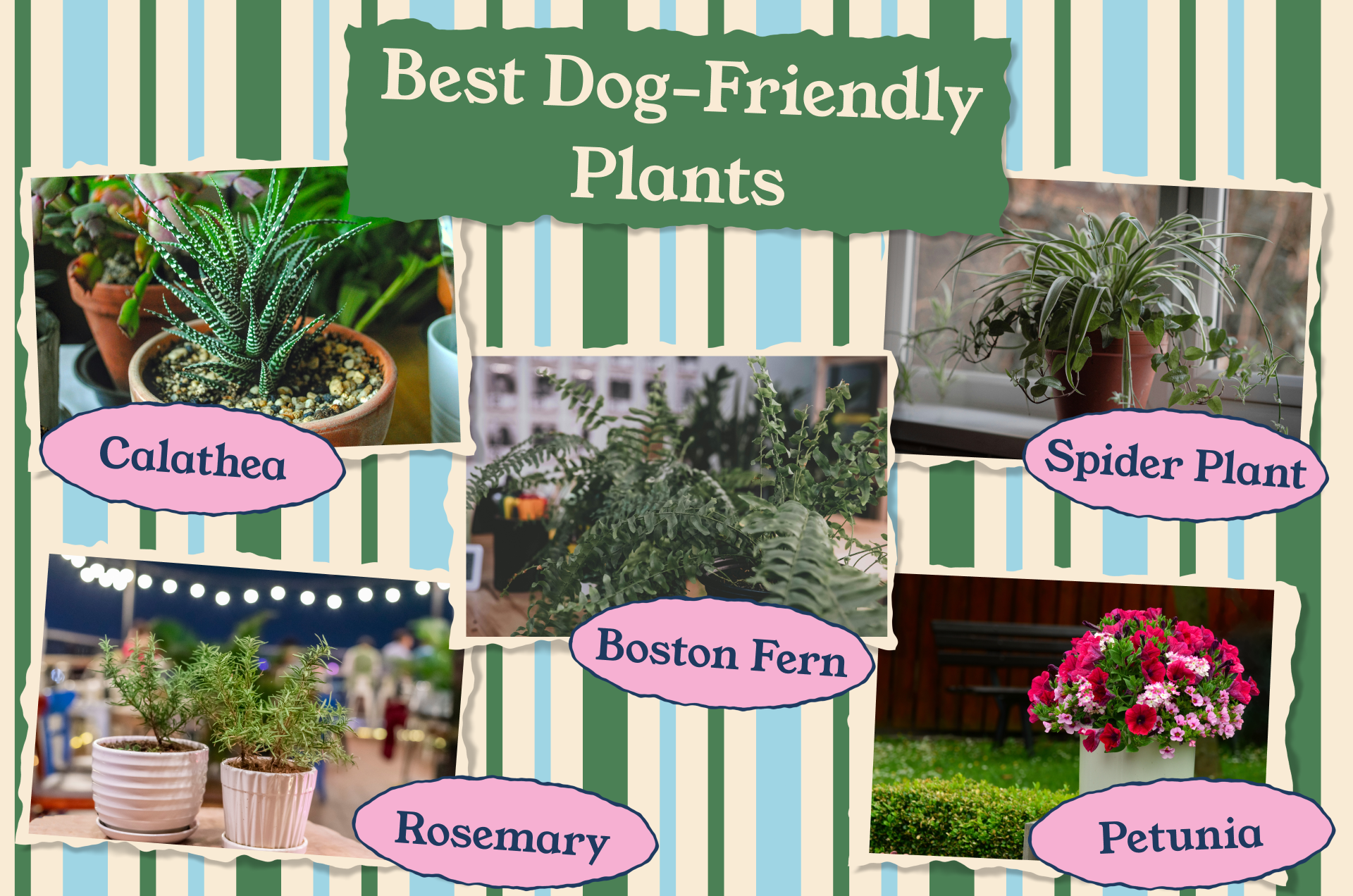
These Plants Won’t Hurt Your Dog But They Might Steal the Show
Love plants and dogs? You don’t have to choose. These pretty, dog-safe plants add charm to your space without putting your pup at risk.
Bringing plants into your home adds life, beauty, and a touch of calm.
But if you’ve got a curious pup who thinks everything green is a snack, you know the struggle: your Monstera might look gorgeous right up until your dog decides it’s an afternoon treat.
Some plants may appear harmless, but they can be toxic to dogs. And no one wants a vet visit because of a rogue pothos leaf.
That’s why I created this guide.
When our dog, Kira, trotted into our lives, our apartment had to change. Since then, I’ve been living (and growing) with plants that look great, require minimal fuss, and, most importantly, are entirely safe for dogs.
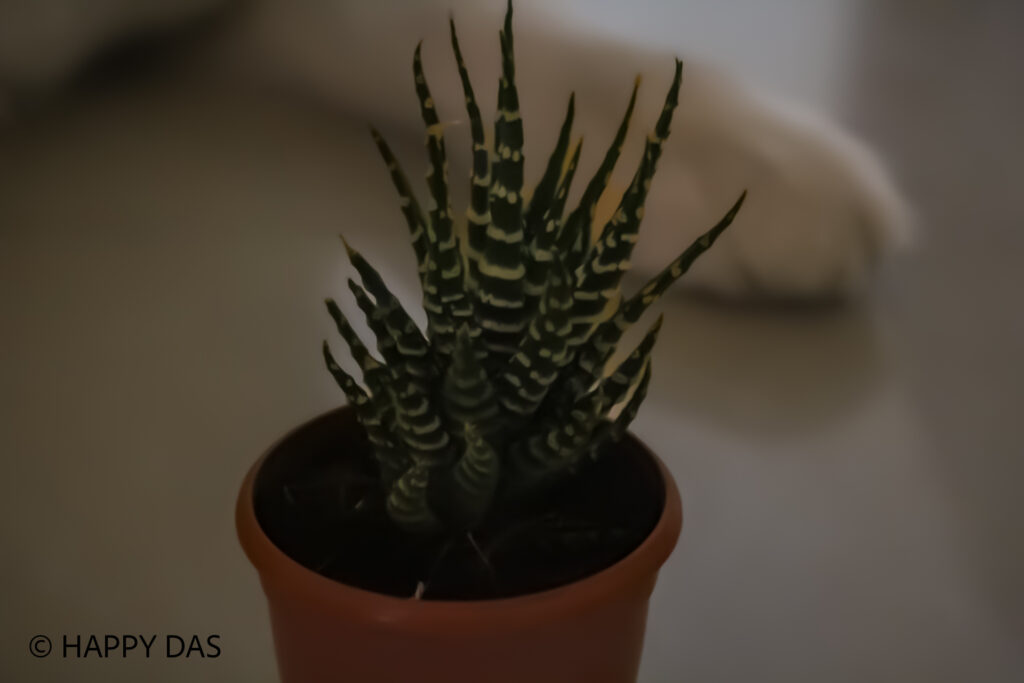
So if you’re a dog parent dreaming of a bit of greenery, but not so keen on vet bills or wilting leaves, here’s your go-to list of 11 low-maintenance, dog-friendly plants. These are plants even a black thumb (or a busy paw-rent) can handle.
How I Researched (and Lived) This List
Every plant on this list is confirmed to be non-toxic to dogs using trusted sources, and most importantly, the ASPCA’s Animal Poison Control database. If a plant didn’t meet the ASPCA’s safety standards, it didn’t get cut.
But this isn’t just research on paper.
I also live with these plants, in a real home, with Kira. From leaf-sniffing curiosity to the occasional accidental nibble, I’ve learned what truly works in a dog-friendly space. Every recommendation comes from firsthand experience of building a home that’s both green and safe for four-legged family members.
So, while the experts provided me with the facts, Kira gave me the final approval.
The Best 11 Dog-Safe, Low-Maintenance Plants
1. Spider Plant
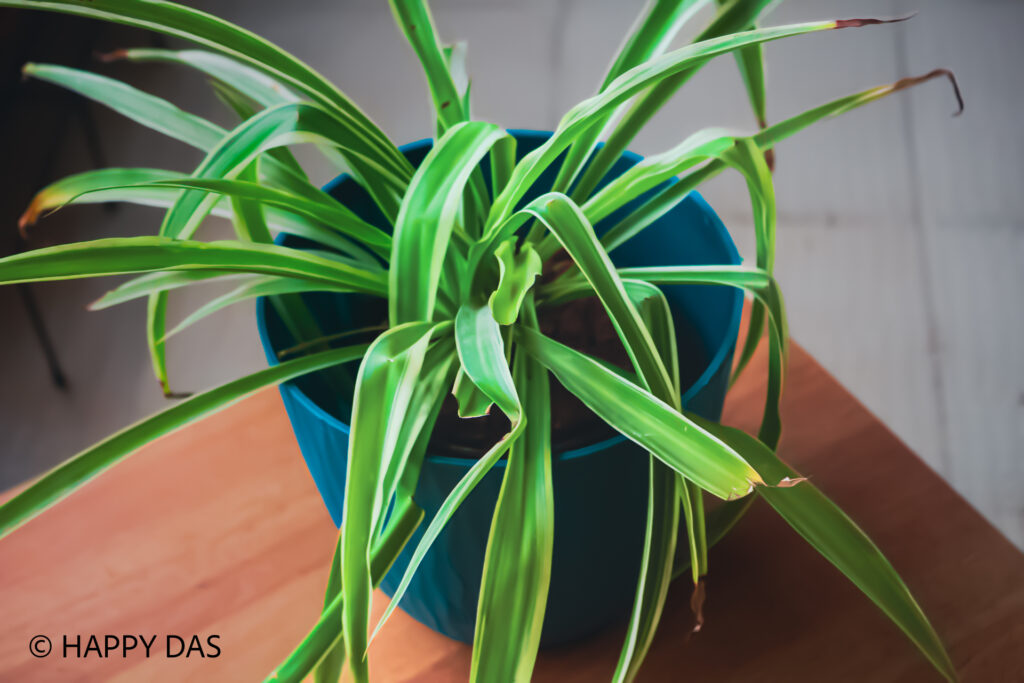
The Spider Plant is a beloved classic known for its arching green-and-white striped leaves and quirky baby “spiderettes” that dangle from long stems. Native to tropical Africa, this low-maintenance plant thrives indoors and is highly adaptable, air-purifying, and pet-safe—a must-have for plant enthusiasts of all levels.
🌺 Spider Plant at a Glance
Scientific name: Chlorophytum comosum
Common names: Spider Plant, Airplane Plant, Ribbon Plant
Leaf color: Green or variegated with white/yellow stripes
Plant size: 12–18 inches tall, with trailing spiderettes up to 2–3 feet long
☀️ Light:
Prefers bright, indirect light, but tolerates lower light conditions well. Too much direct sun may scorch the leaves.
💧 Water:
Water when the top 1–2 inches of soil are dry. Likes slightly moist soil but bounces back well if underwatered. Avoid soggy roots. Appreciates occasional misting or humidity.
🌿 Why I Love It:
- Super easy to care for and hard to kill
- Shoots out adorable baby plantlets you can propagate and share
- Great for hanging baskets or shelf edges
- Known for its air-purifying qualities
🪴 Placement Tip:
Perfect for hanging near a bright window or on a shelf with ample space for trailing. Use a pot with drainage and snip off browning leaf tips caused by fluoride or salt buildup in water.
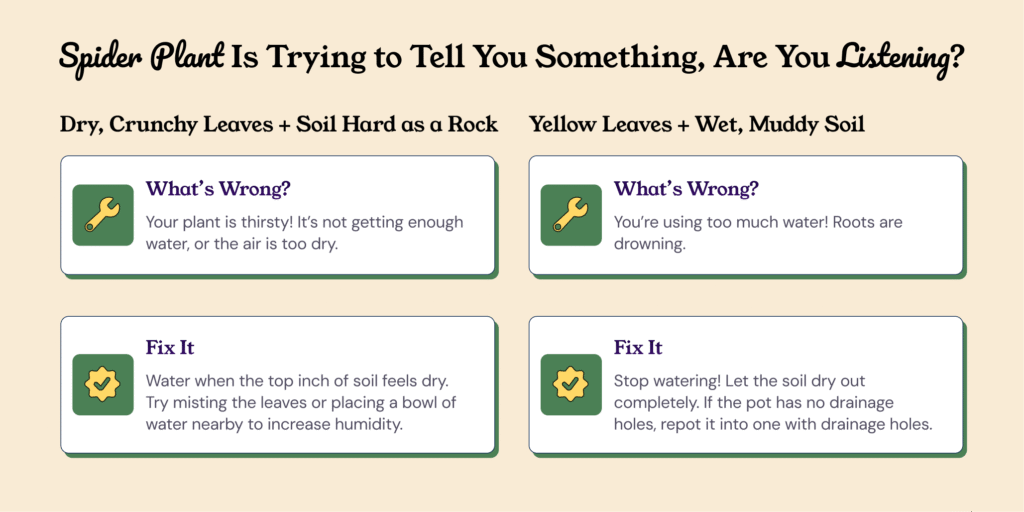
Awoozo Tip: Hang it in a basket to keep curious pups at bay, plus, those curly leaves look tremendous overhead.
2. Areca Palm
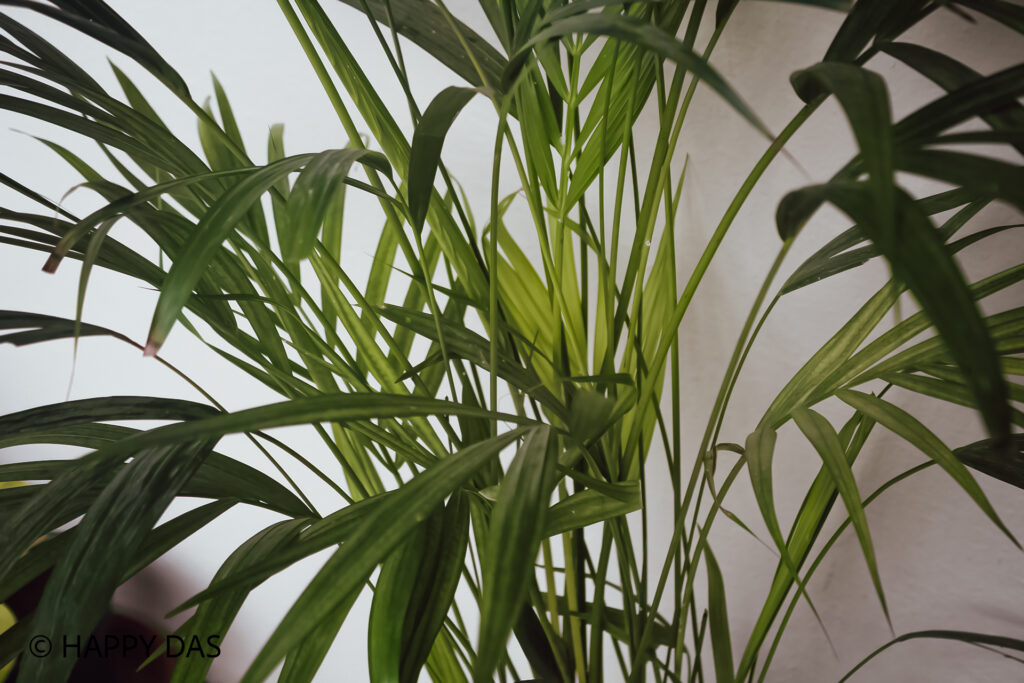
The Areca Palm is a tropical favorite known for its graceful, feathery fronds and natural air-purifying abilities. Native to Madagascar, this palm brings vacation vibes indoors and is both easy to care for and safe for pets. It’s a go-to choice for brightening corners and creating a lush, indoor oasis.
🌺 Areca Palm at a Glance
- Scientific name: Dypsis lutescens
- Common names: Areca Palm, Butterfly Palm, Golden Cane Palm
- Leaf color: Bright green, arching fronds with soft, narrow leaflets
- Plant size: 6–10 feet tall indoors (can be pruned to maintain height)
☀️ Light:
Thrives in bright, indirect light. Can tolerate medium light, but growth will slow. Avoid direct, harsh sunlight, which can scorch the fronds.
💧 Water:
Water every 1–2 weeks, allowing the top layer of soil to dry halfway between waterings. Areca Palms enjoy consistent moisture and humidity—mist occasionally, especially in dry seasons.
🌿 Why I Love It:
- Adds tropical elegance without high maintenance
- Excellent natural air purifier
- Works well in large planters or indoor corners
- Fronds sway gently, adding movement to indoor spaces
🪴 Placement Tip:
Place in a bright corner or near a sheer-curtained window. Keep away from cold drafts and dry heaters. Prune browning fronds at the base to keep it looking lush.
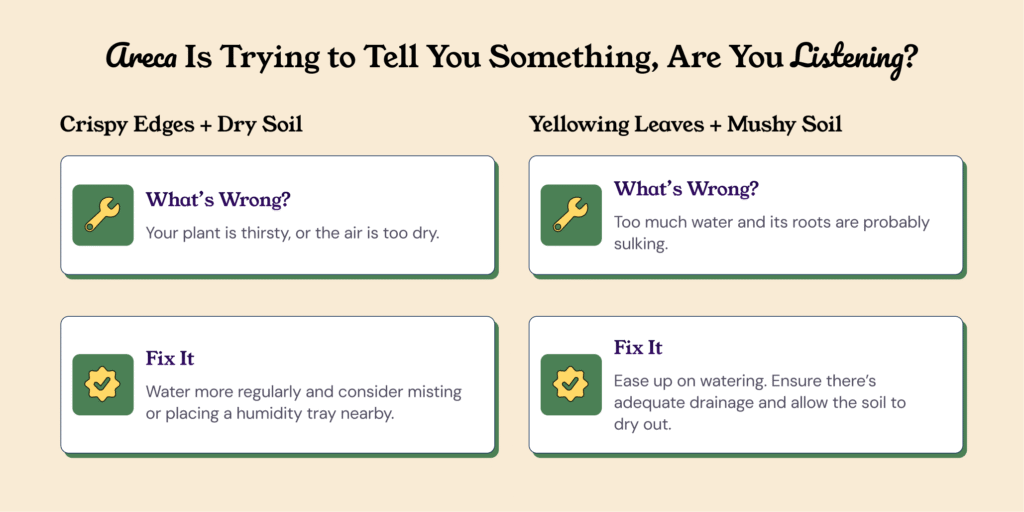
Awoozo Tip: Great for corners where your dog can’t reach the fronds or hide squeaky toys.
3. Calathea
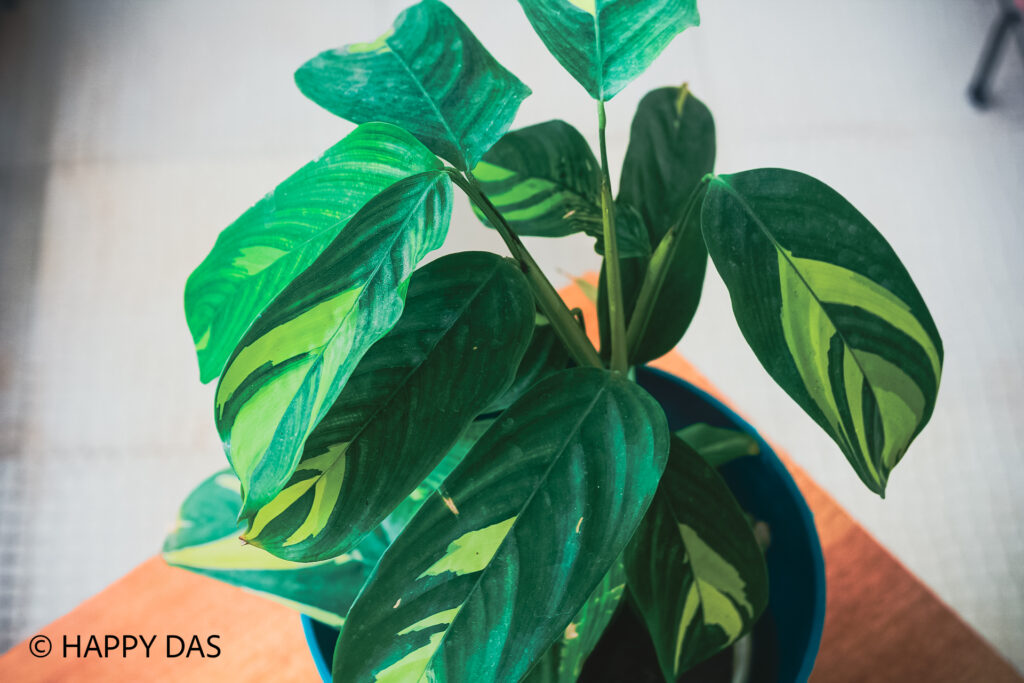
Calatheas are known for their striking, patterned leaves that seem almost hand-painted, and their charming habit of folding up at night, earning them the nickname “prayer plants.” Native to the tropical rainforests of South America, these plants thrive in humidity and indirect light, making them a favorite among plant parents who appreciate a touch of drama (in a good way).
🌺 Calathea at a Glance
- Scientific name: Calathea spp. (often reclassified under Goeppertia)
- Common names: Calathea, Prayer Plant (shared with Maranta species)
- Leaf color: Green with striking patterns in purple, white, pink, or silver
- Plant size: 1–2 feet tall and wide (varies by variety)
☀️ Light:
Thrives in medium to bright indirect light. Avoid direct sunlight as it can fade or scorch those gorgeous leaves.
💧 Water:
Keep soil consistently moist but not soggy. Use filtered or distilled water if possible, as Calatheas are sensitive to fluoride and hard water. Loves high humidity (for example, misting, pebble trays, or using a humidifier).
🌿 Why I Love It:
- Leaves that move with the light—yes!
- Bold patterns and colors that look like living art
- Ideal for bathrooms or humid corners
- Tons of varieties—from Calathea orbifolia to Calathea medallion
🪴 Placement Tip:
Place in a humid, shaded spot with indirect light, like a bathroom with a window or near a humidifier. Keep away from cold drafts and heaters, and rotate regularly for even growth.
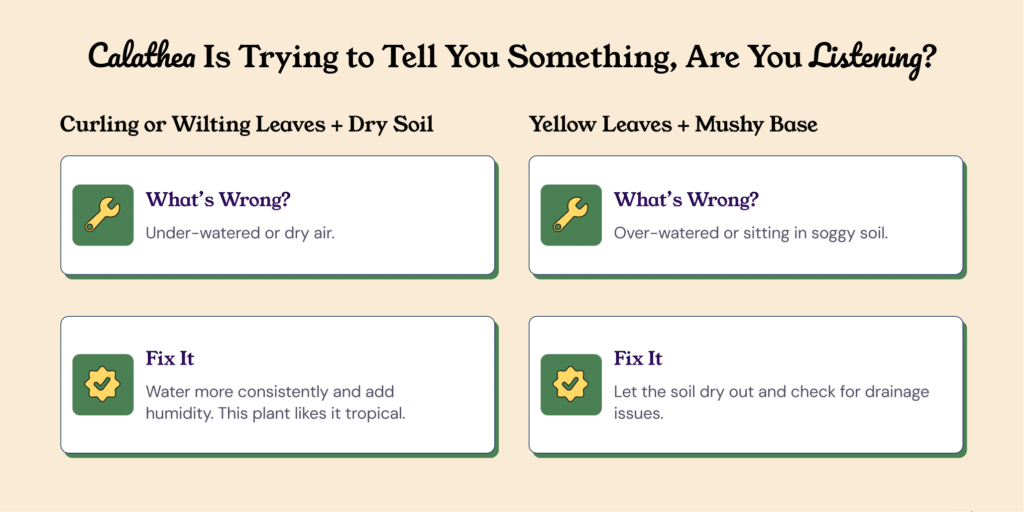
Awoozo Tip: Calatheas can be fussy about hard water. Use distilled or filtered water, or let tap water sit for at least 24 hours to allow it to become disinfected.
4. Peperomia (Peperomia polybotrya ‘Raindrop’)

Peperomia is a diverse genus of small houseplants with charming, compact foliage that ranges from waxy to textured, rippled, or even heart-shaped. Native to Central and South America, these plants are prized for their distinctive leaf patterns, non-toxic nature, and low-maintenance requirements, making them ideal for shelves, desks, and windowsills.
🌺 Peperomia at a Glance
- Scientific name: Peperomia spp.
- Common names: Peperomia, Radiator Plant
- Leaf color: Varies widely—green, silver, red, variegated, or striped (depending on species)
- Plant size: 6–12 inches tall and wide
☀️ Light:
Loves bright, indirect light, though many varieties tolerate medium light just fine. Avoid direct sunlight, as it can scorch the leaves.
💧 Water:
Water when the top inch of soil feels dry to the touch. Peperomias are semi-succulent, so they don’t need frequent watering. Less is more—let them dry out between drinks.
🌿 Why I Love It:
- Comes in a vast variety of leaf shapes and colors
- Compact and tidy, perfect for small spaces
- Easy to care for and great for beginner plant parents
- Looks stunning in grouped plant displays or solo pots
🪴 Placement Tip:
Place on desks, bookshelves, or kitchen counters where it gets soft, filtered light. Use a well-draining potting mix, and avoid overwatering to prevent root rot. Rotate occasionally for even growth.
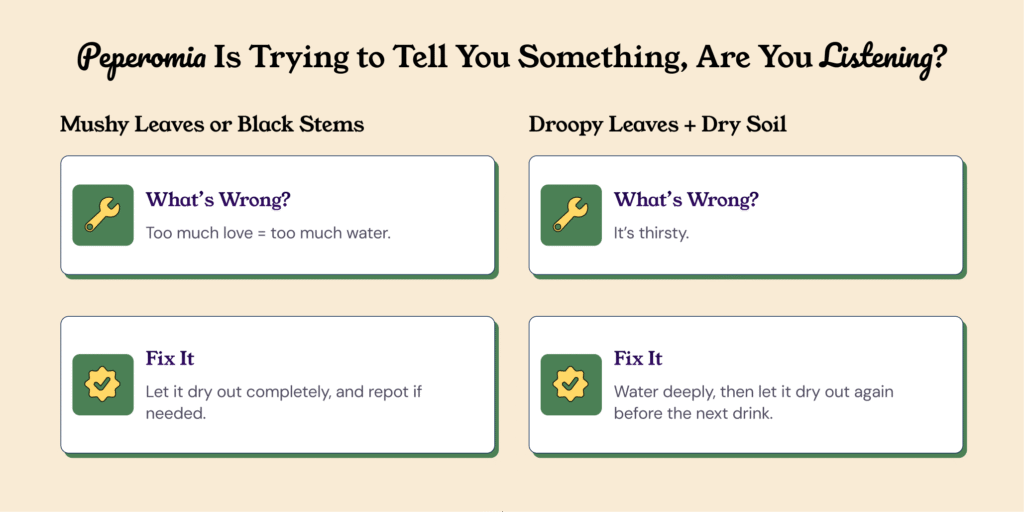
Awoozo Tip: Looks adorable on a bookshelf. Bonus: it won’t drop leaves all over your workspace.
5. Boston Fern
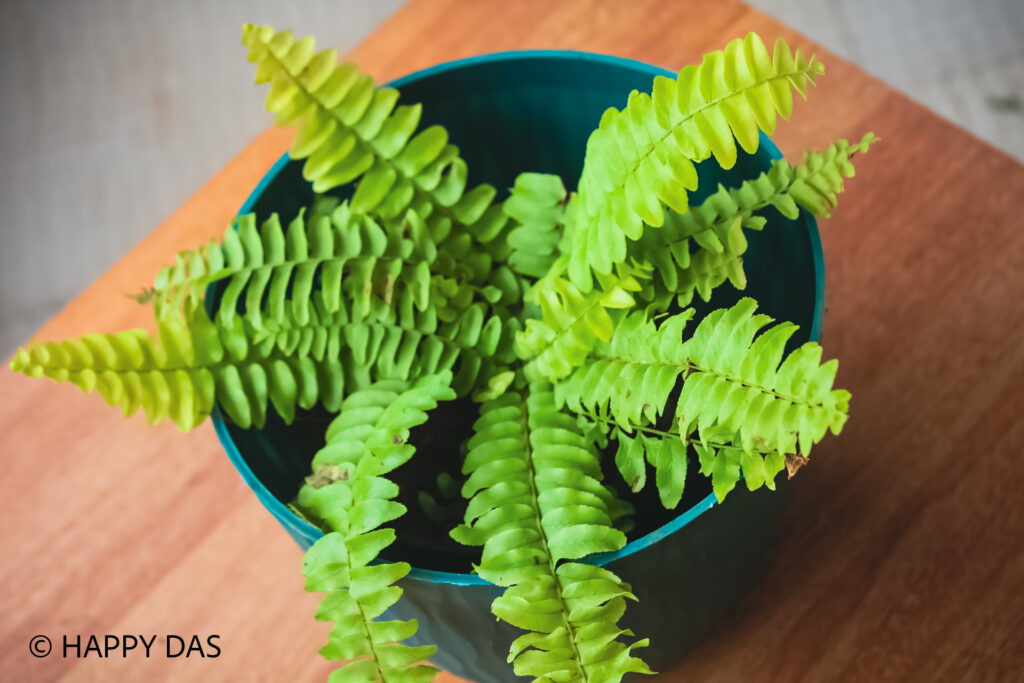
The Boston Fern is a lush, arching beauty known for its feathery fronds and classic, old-school charm. Native to tropical and subtropical forests, this fern loves humidity and makes a perfect hanging or pedestal plant. It’s also one of the best natural air purifiers and is pet-safe.
🌺 Boston Fern at a Glance
- Scientific name: Nephrolepis exaltata ‘Bostoniensis’
- Common names: Boston Fern, Sword Fern
- Leaf color: Bright to deep green, delicate and feathery
- Plant size: 1–3 feet tall and wide, with fronds that can cascade beautifully
☀️ Light:
Prefers bright, indirect light or dappled sun. Too much direct sunlight can crisp the fronds; too little light can cause leaf drop.
💧 Water:
Keep soil consistently moist, but not soggy. Boston Ferns are humidity lovers, so mist often or place near a humidifier. Never let the soil dry out completely.
🌿 Why I Love It:
- Elegant, flowing fronds add softness to any room
- Excellent for natural humidity control and air purification
- Looks fantastic in hanging baskets, on plant stands, or high shelves
- A vintage house plant that’s back in style
🪴 Placement Tip:
Best placed in bathrooms, kitchens, or shaded patios with high humidity and soft light. Rotate the plant occasionally to promote even growth, and trim any brown tips to keep it looking fresh.
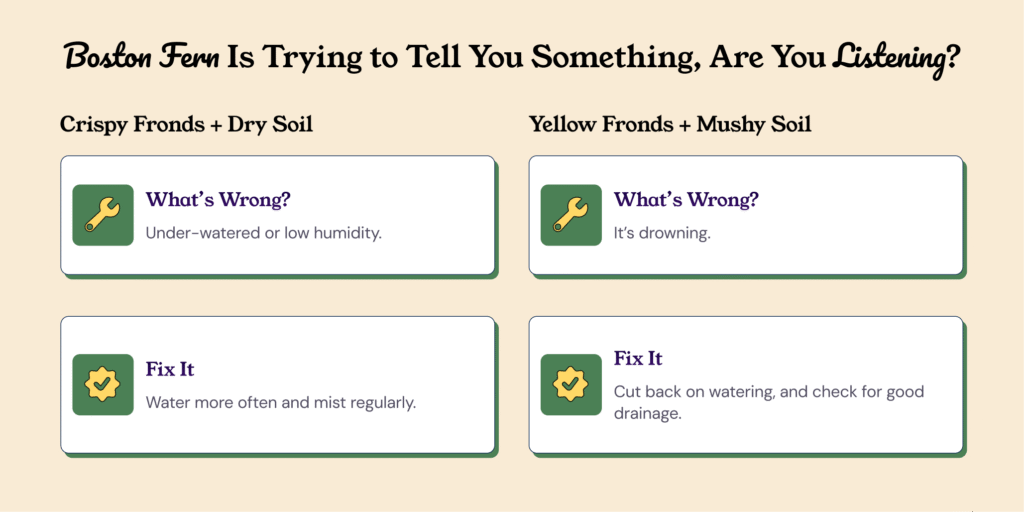
Awoozo Tip: Ours hangs over Kira’s bed — she gets the shade, the plant receives safety.
6. Polka Dot Plant
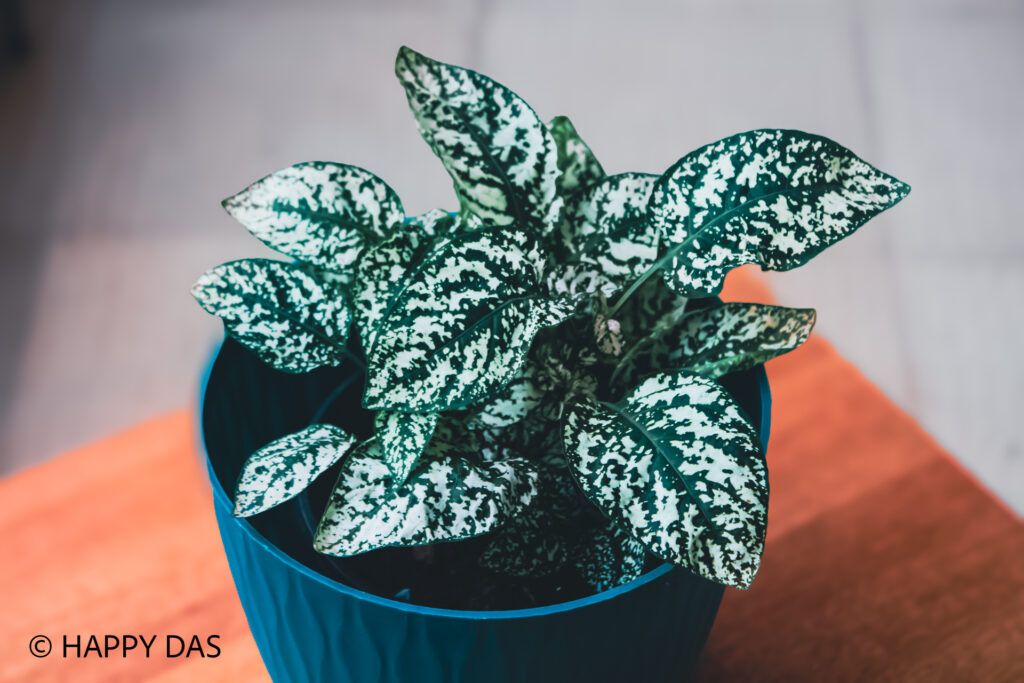
The Polka Dot Plant is a playful, eye-catching plant known for its freckled leaves that come in shades of pink, white, red, and green. Native to Madagascar, this plant brings instant charm to any indoor space with its colorful, confetti-like pattern and it stays compact and easy to care for.
🌺 Polka Dot Plant at a Glance
- Scientific name: Hypoestes phyllostachya
- Common names: Polka Dot Plant, Freckle Face
- Leaf color: Green speckled with pink, white, or red (variegation varies)
- Plant size: 6–12 inches tall and wide (can grow larger outdoors)
☀️ Light:
Loves bright, indirect light. Too little light can cause the colors to fade; too much direct sun can bleach the leaves.
💧 Water:
Water when the top inch of soil feels dry to the touch. Keep the soil consistently moist but not soggy. Loves high humidity, so misting is a plus.
🌿 Why I Love It:
- Playful pops of color brighten up shelves and desktops
- Compact and great for small pots or terrariums
- Easy to propagate and share with friends
- Responds visibly to care—watch it perk up after a drink!
🪴 Placement Tip:
Best in a bright, humid spot, such as a bathroom windowsill, kitchen counter, or grouped with other moisture-loving plants. Pinch back leggy growth to keep it bushy.
Awoozo Tip: Looks adorable in a small ceramic dog-themed pot.

7. Haworthia
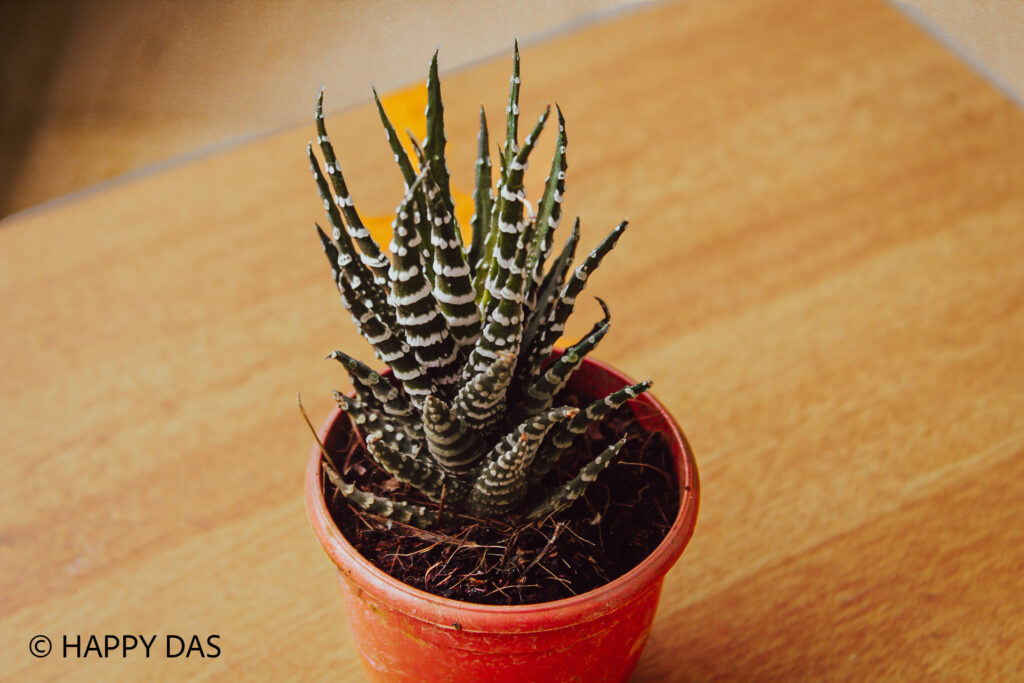
Haworthia is a charming genus of small succulents native to southern Africa, prized for its rosette-shaped leaves, distinct textures, and easygoing nature. Often mistaken for mini aloes, these low-maintenance beauties are perfect for desks, windowsills, and anyone new to succulent care.
🌺 Haworthia at a Glance
- Scientific name: Haworthia spp.
- Common names: Haworthia, Zebra Plant (for Haworthia attenuata), Cushion Aloe
- Leaf colors: Green, often striped, spotted, or translucent, depending on the variety
- Plant size: Typically 3–5 inches tall and wide
☀️ Light:
Loves bright, indirect light or filtered sun. Can tolerate lower light than most succulents, making it ideal for indoor spaces. Avoid harsh afternoon rays.
💧 Water:
Water every 2–3 weeks, allowing the soil to dry out completely between waterings. Less is more—overwatering is the most common cause of death.
🌿 Why I Love It:
- Compact and slow-growing—great for small spaces
- Thrives on neglect (in a good way)
- Available in tons of fun shapes and patterns
- Easy to propagate for plant swaps or gifts
🪴 Placement Tip:
Perfect for desktops, windowsills, or terracotta pots with drainage holes. Pair with cactus mix soil and forget about it (until watering day)!
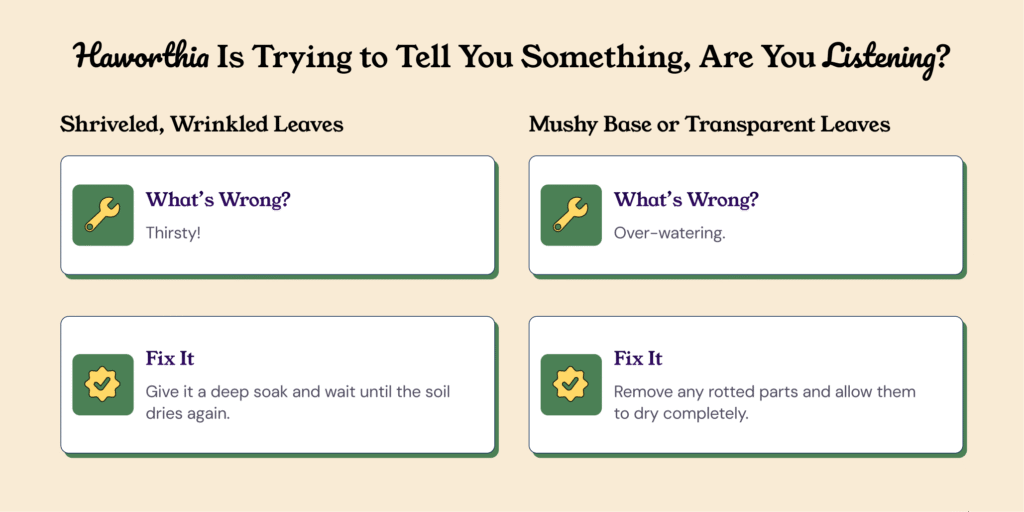
Awoozo Tip: Lives happily on our sunniest sill, untouched by paws.
8. Petunia
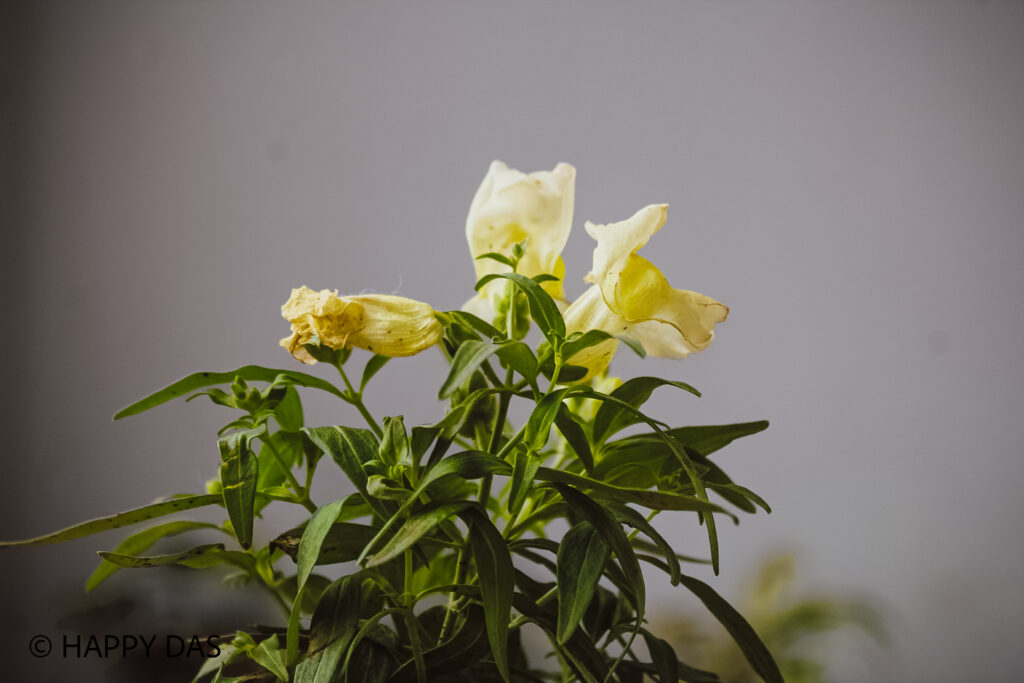
Petunias are vibrant, trumpet-shaped flowers from the nightshade family (Solanaceae), loved for their long-lasting blooms and brilliant range of colors. These garden staples add instant charm to containers, hanging baskets, and flower beds, and they bloom from spring to fall with minimal fuss.
🌺 Petunia at a Glance
- Scientific name: Petunia spp.
- Common names: Petunia
- Flower colors: Pink, purple, red, white, yellow, blue, and multicolored blends
- Plant size: 6 inches to 18 inches tall, with some varieties trailing up to 3 feet
☀️ Light:
Thrives in full sun. Petunias bloom best with at least 5–6 hours of direct light daily.
💧 Water:
Water when the top inch of soil feels dry to the touch. Petunias like consistent moisture but hate soggy soil. Good drainage is essential, especially in pots.
🌿 Why I Love It:
- Blooms nonstop with minimal care
- Perfect for colorful borders, baskets, and window boxes
- Available in frilly, striped, ruffled, and trailing varieties
- Attracts butterflies and hummingbirds
🪴 Placement Tip:
Use petunias in sunny balcony boxes, garden beds, or hanging planters. Deadhead spent flowers regularly to keep the blooms coming throughout the entire season.
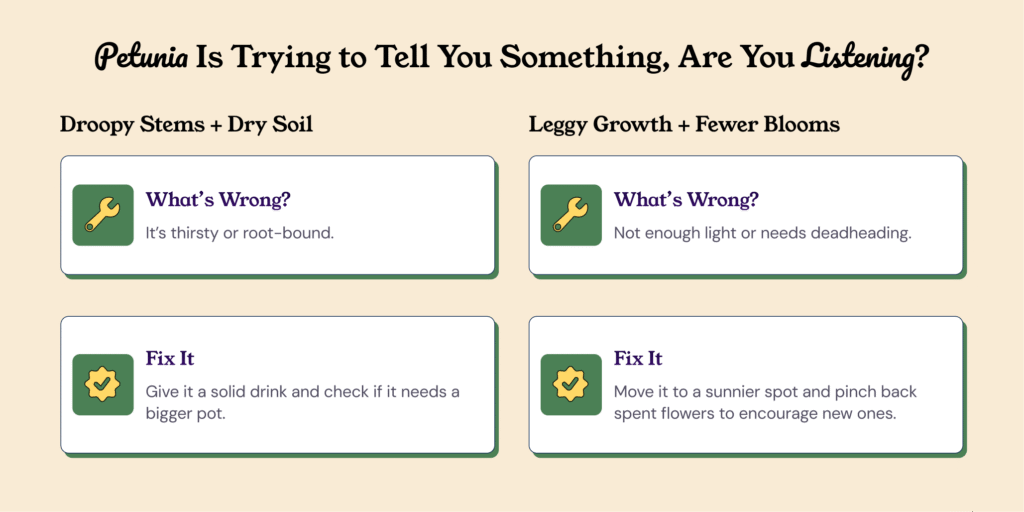
Awoozo Tip: Perfect for hanging baskets out of paw-reach — blooms up top, zoomies down below.
9. Rosemary
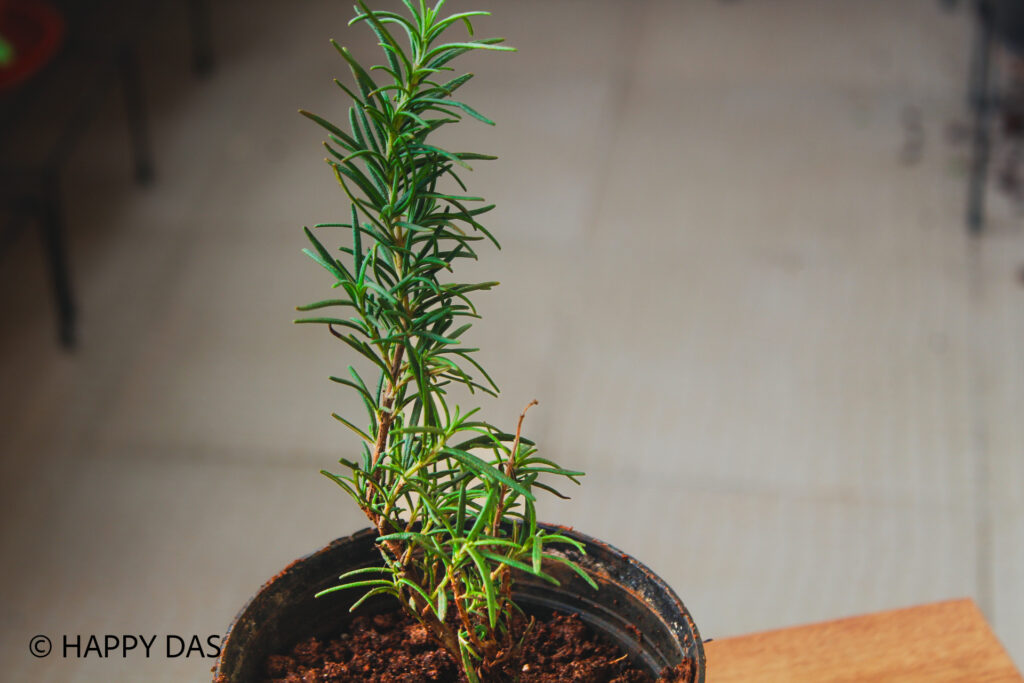
Rosemary is a fragrant, evergreen herb from the mint family (Lamiaceae), beloved for its needle-like leaves and woody aroma. It’s as practical as it’s beautiful. You can use it in cooking, natural remedies, and ornamental landscaping. Rosemary grows as a hardy shrub and can thrive both in the ground and containers.
🌺 Rosemary at a Glance
- Scientific name: Salvia rosmarinus (formerly Rosmarinus officinalis)
- Common names: Rosemary, Dew of the sea
- Flower colors: Pale blue, lavender, white, or pink (seasonal)
- Plant size: 2–4 feet tall (can grow larger when planted outdoors in the ground)
☀️ Light:
Loves full sun. Allow it to receive at least 6–8 hours of direct sunlight daily for optimal growth and aroma development.
💧 Water:
Water when the top 2 inches of soil are dry. Rosemary prefers dry, well-drained soil and is drought-tolerant once established. Avoid overwatering.
🌿 Why I Love It:
- Dual-purpose: beautiful and edible
- Low-maintenance and drought-resistant
- Adds a soothing herbal scent to patios and pathways
- Repels certain insects naturally
🪴 Placement Tip:
Ideal for sunny windowsills, herb gardens, or patio pots. Let the soil dry out between waterings and avoid areas with high humidity. Clip regularly to keep it bushy and fragrant.
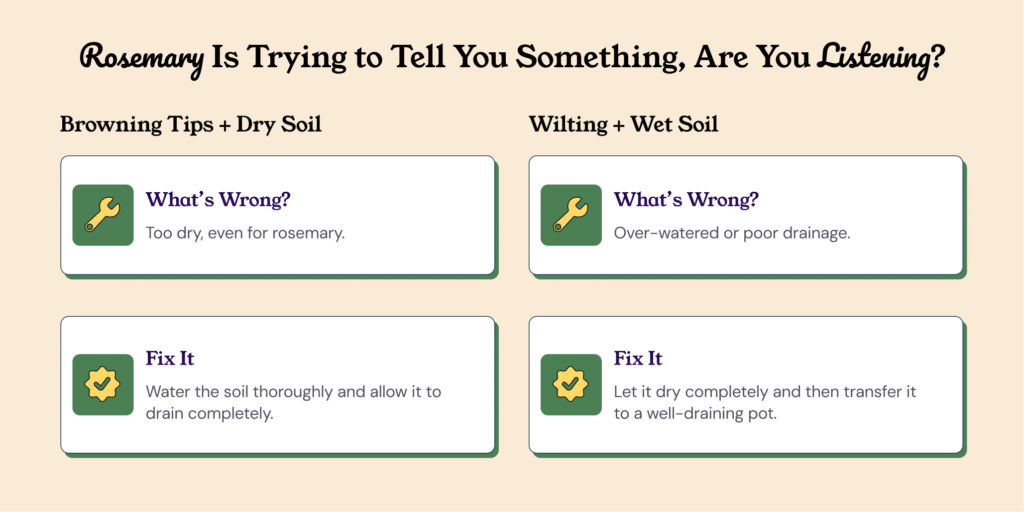
Awoozo Tip: Keep it on a sunny kitchen windowsill so it’s safe for pups and perfect for spontaneous pasta nights.
10. Zinnia
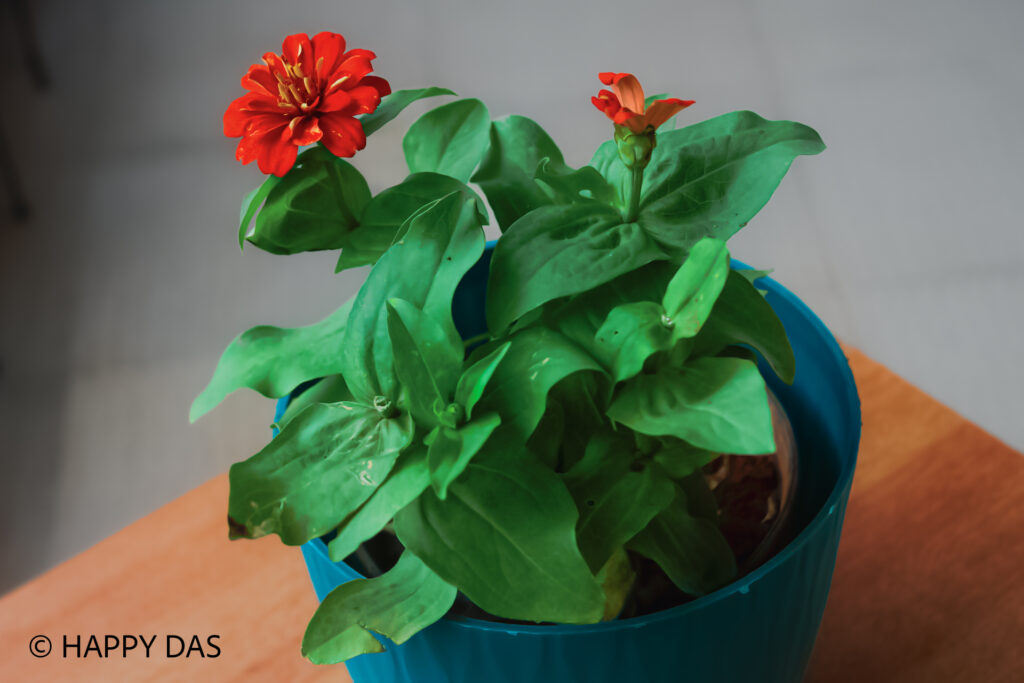
Zinnia is a hardy, sun-loving annual from the Asteraceae family, known for its bright, cheerful blooms that come in almost every color imaginable. These low-maintenance flowers are pollinator magnets and thrive in warm climates, making them a favorite for gardens, balconies, and even cut flower arrangements.
🌺 Zinnia at a Glance
- Scientific name: Zinnia elegans
- Common names: Zinnia, Youth-and-age
- Flower colors: Red, pink, orange, yellow, white, purple, green, multicolored
- Plant size: Typically 1–3 feet tall, depending on the variety
☀️ Light:
Thrives in full sun. Zinnias love 6+ hours of direct light daily to bloom at their best.
💧 Water:
Water when the top inch of soil feels dry to the touch. Zinnias prefer well-draining soil and don’t like soggy roots. Avoid overhead watering to prevent mildew.
🌿 Why I Love It:
- Explodes with color and blooms for months with minimal effort
- Easy to grow from seed and great for beginner gardeners
- Attracts butterflies, bees, and happy vibes
🪴 Placement Tip:
Perfect for sunny garden beds, borders, or balcony planters. Mix different colors and heights for a vibrant, wildflower-style look.
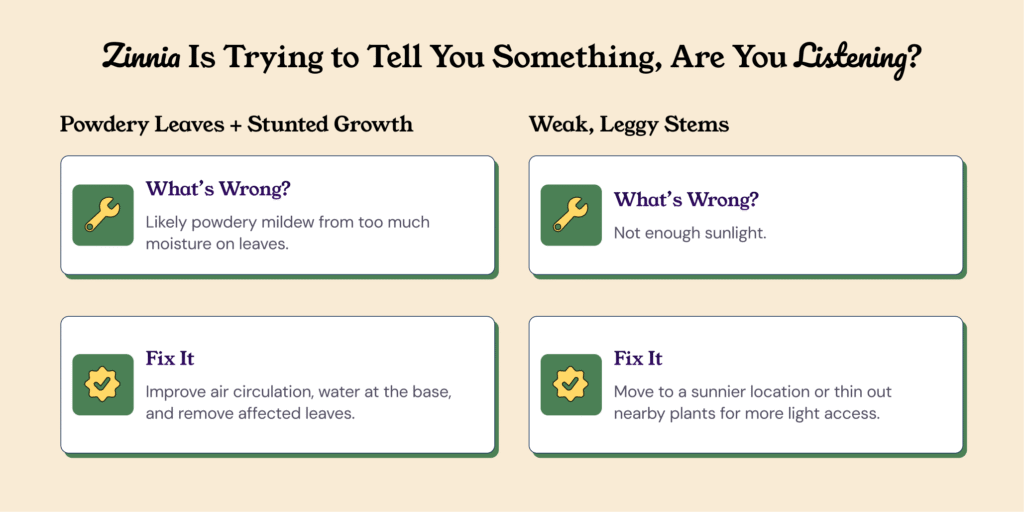
Awoozo Tip: Great for outdoor planters — your dog can nap in the shade while bees get their buzz on.
11. Ixora
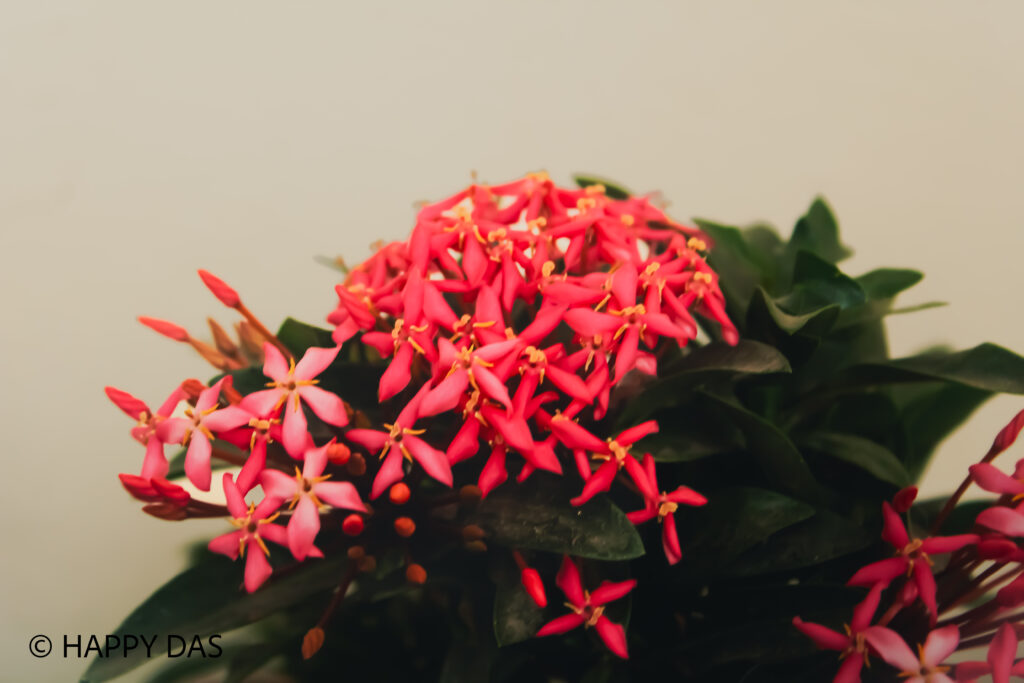
Ixora is a genus of flowering plants in the Rubiaceae family, commonly known as West Indian Jasmine. It’s a popular tropical shrub grown for its clusters of bright, showy flowers that bloom year-round in warm climates. Here’s a quick breakdown of what makes Ixora special:
🌺 Ixora at a Glance
- Scientific name: Ixora coccinea (most common variety)
- Common names: Jungle geranium, Flame of the woods, West Indian jasmine
- Flower colors: Red, orange, pink, yellow, white
- Plant size: Grows as a compact shrub, 2–4 feet tall (can grow taller in the ground)
☀️ Light:
Loves full sun to part shade. The more sun it gets, the more flowers you’ll see.
💧 Water:
Keep soil consistently moist but not soggy. Ixora prefers humidity and thrives in well-draining, slightly acidic soil.
🌿 Why I Love It:
- Brings tropical, resort-style color to patios and gardens.
- Works excellent in hedges, pots, or as a flowering accent.
- Attracts butterflies and pollinators.
🪴 Placement Tip:
Use Ixora in sunny borders or balcony planters where it gets plenty of light and stays warm. Ideal for tropical and subtropical zones.
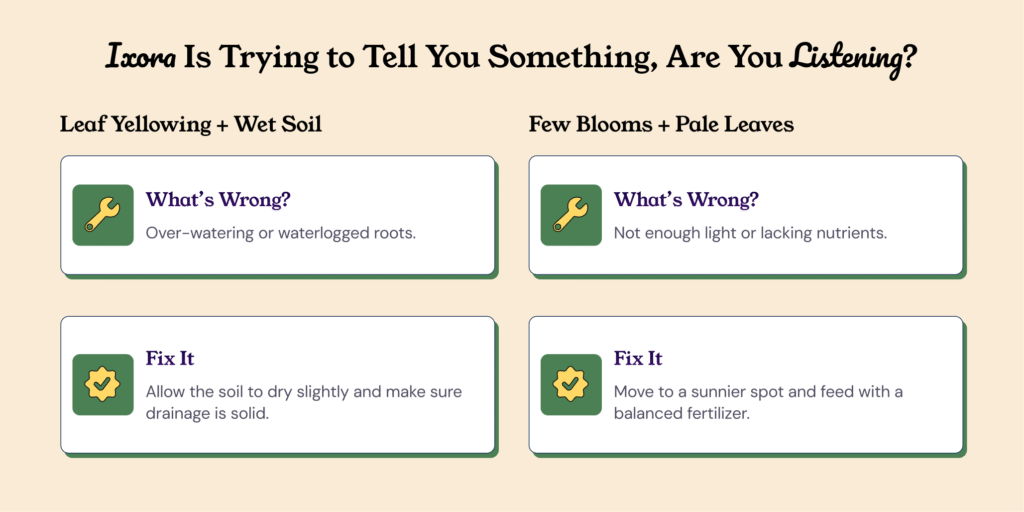
Awoozo Tip: This one thrives outdoors. So, just keep it above tail height to avoid flower decapitations.
Growing Something Good Along With a Wagging Tail
There’s this idea that you can’t have plants and dogs. That it’s either chewed-up leaves or no leaves at all.
But for me… it started with one small pothos on a windowsill. Out of reach, just testing the waters. Kira sniffed, looked unimpressed, and walked away.
That’s when I realized..we can make it work. One shelf, one heavy pot, one “leave it” at a time.
Now there are leafy corners and wagging tails. A little chaos, sure. But also a lot of calm.
And honestly—I’ve come to believe—it’s the best kind of balance.



















